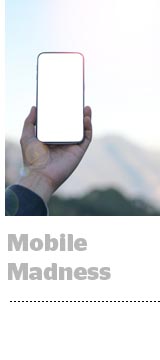
Digital ad revenue continues to rise at the expense of traditional media.
In the first half of 2017, digital advertising revenue grew 23% to $40 billion, according to the Interactive Advertising Bureau and PricewaterhouseCooper’s Internet Advertising Revenue report, released Wednesday. Read it.
Digital’s growth represents a 22.6% increase from last year, and it’s the largest growth rate for digital advertising the IAB has seen since 2011.
“The industry has quadrupled in size in 10 years,” said David Silverman, partner at PwC. “What’s unique to this growth rate is that it’s no longer unique. It’s been consistent over time.”
Meanwhile, traditional advertising came in soft, with broadcast TV up just 1% to $11.6 billion year over year, cable TV down by 1% to $6.4 billion and both newspapers and magazines down 10% to $3.9 billion and $6.2 billion, respectively.
“We see again really strong growth in every aspect of digital compared to the growth trends of traditional media,” said Kristina Sruoginis, director of research at the IAB.
Digital advertising growth was fueled mostly by mobile, which captured over half of all digital dollars, or $21.7 billion, during the first six months of 2017. That’s a 40% increase from last year, when mobile captured $15.5 billion.
“Mobile has been the biggest disruptor of all,” Silverman said. “It’s enabled advertisers to reach consumer basically anywhere. That has [led to] a huge shift in the overall ability of advertisers and marketers.”
Within digital, display (including banners, rich media and video) across desktop and mobile grew 28% to $17. 6 billion in the first half of the year. Social media grew 37% to $9.5 billion.
Digital video was the fastest-growing format within digital, increasing 37% from $3.8 billion to $5.2 billion year over year. That growth, largely in mobile, is “a really strong indicator that advertisers are able to reach consumers across devices wherever they’re consuming content.” Silverman said. Digital video spend on mobile grew 65% year over year to $2.6 billion.
“The primary driver [of digital ad growth] is the ubiquity of the internet right now, driven by the significant growth in mobile, social and video, all playing into one another,” Silverman said.
The report did not name specific companies, but said the top 10 media sellers in the country are capturing 75% of digital revenues. And while revenue concentration among media sellers isn’t new, those top 10 companies are look very different than they did 10 to 15 years ago, Silverman said.
“The companies disrupting the latest trends impacting the industry tend to get the biggest gains in market share,” he said.
The Local Scoop
For the first time, the IAB looked at how much local businesses, which generate $50 million or less in annual revenue, are spending on digital advertising.
Of the roughly 9 million small to medium-sized businesses in the US that buy advertising, 75% have spent on digital, putting the local digital ad market at $6.8 million, according to research firm Borrell Associates.
Of those local marketers, 15% buy programmatically. And 80% of those local programmatic buyers say they buy self-serve ads from social platforms like Facebook and Twitter. Sixty-three percent said they plan to increase spend on digital advertising next year.
“Many of their digital buys are seen as low budget, DIY solutions,” said Gordon Borrell, CEO of Borrell Associates.
Social media marketing is the fastest-growing digital category for local marketers and, for the first time, the top ad spend category, surpassing cable. This year, 63% of local marketers spent on social media, up from 20% just three years ago. Eighty-two percent of that spend is going to national digital pure-play companies, Borrell said.
“[Local] advertisers are in love with digital media. They continue that love affair,” he said. “They really don’t care about fake news and ad fraud. It hasn’t really gotten to them. They make decisions on whether something worked.”
Still, roughly 19% of local digital spend is going to traditional media companies. According to Borrell, local daily newspapers make $2.5 million in digital revenues on average every year.
“These are the pieces that tend to be forgotten,” Borrell said. “There’s quite a bit [of spend]. and it all adds up.”
This post was syndicated from Ad Exchanger.

More Stories
Marketing Morsels: Hidden Valley Ranch, La-Z-Boy, Topps & More
Flashback: Jane Pauley and Deborah Norville Revisit Today’s 1989 Succession Drama
Ally Financial Revives ‘Banksgiving’ With A TikTok Twist